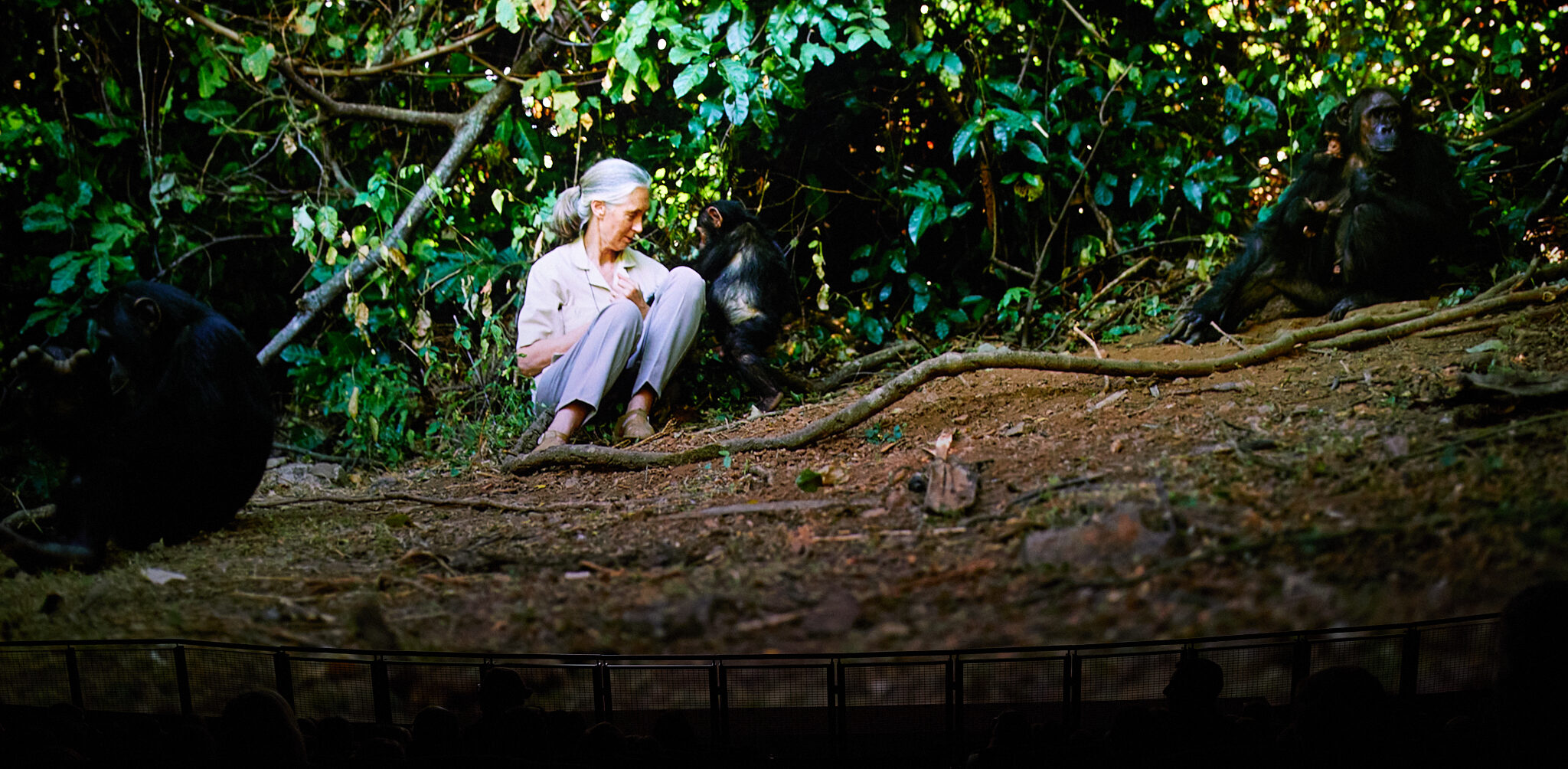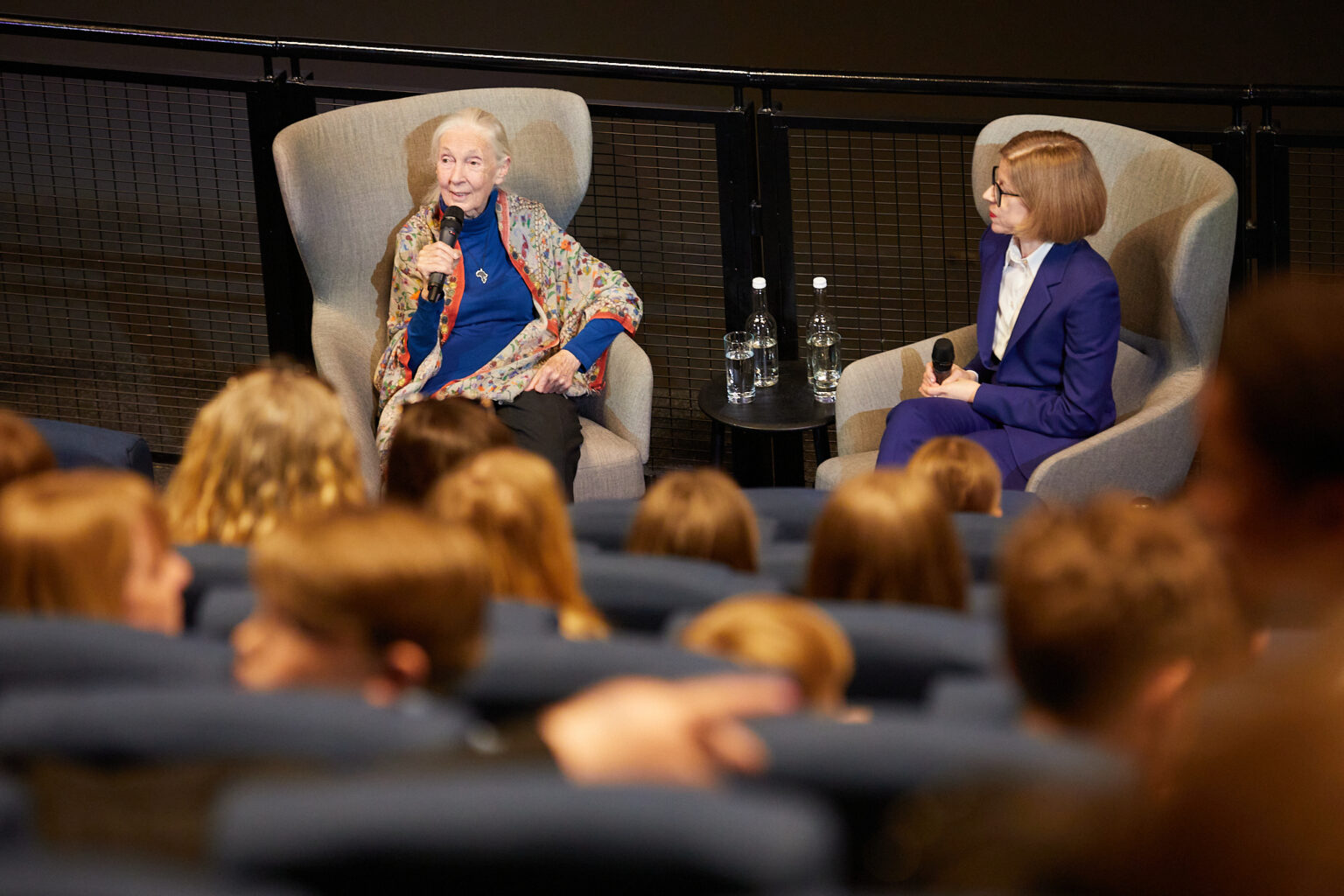Dr Goodall dedicated decades to the detailed study of chimpanzee behaviour in Tanzania. Her pioneering fieldwork revealed new aspects of chimp behaviours such as highly developed social behaviours and the ability to make and use tools, redefining what it meant to be human.
Previously scientists had believed that the ability to make and use tools was peculiar to human beings. As the anthropologist – and her mentor – Louis Leakey wrote, ‘Now we must redefine tool, redefine man, or accept chimpanzees as human.’
‘She was formidable,’ said the Science Museum Group’s Science Director Roger Highfield. ‘She completely changed how we think about other species and how we think about ourselves – she challenged human exceptionalism.’
Goodall was also a trailblazer for women in science, inspiring countless women to pursue careers in primatology and other scientific fields, and in the face of entrenched sexism. As she recalled: ‘Scientists were grumpily saying, “She’s only getting this credit because she’s a National Geographic cover girl and she’s got lovely legs.” I mean, today, if somebody said that, you’d be shocked, but it was kind of normal then.’
In recent years she became a global advocate for animal welfare, human rights, species and environmental protection, appearing in the museum’s Climate Talks in 2021 and becoming a Messenger of Peace for the United Nations.

In May 2025, Dr Goodall received a Science Museum Group Fellowship, in recognition of her work as a conservationist and primatologist as well as her contribution to the protection of biodiversity.
Accepting the award at the Science Museum she said: ‘My main reason for hope today is young people’, as she emphasised the importance of engaging and empowering the next generation through activities such as the Roots & Shoots programme she founded and spaces such as the Science Museum.
Roots & Shoots aims to nurture young minds and hands to build a sustainable future through community-led conservation actions. During this October half term, a temporary display at the Science Museum will explore Dr Goodall’s journey from curious child to world-changing scientist, with families and schools able to take part in a limited number of workshops led by our Explainers and the Roots & Shoots team to learn more about the life and work of Dr Goodall.
During Dr Goodall’s visit to the Science Museum to accept her fellowship she took part in a Q&A with 300 local school children, telling the young people: ‘When you start taking action, rolling up your sleeves, you feel like “gosh I can make a difference”. If millions of people make the world just a little bit better then think what we can achieve.’

Speaking about her lifelong fascination with chimpanzees, Dr Goodall described an amazing moment of acceptance from the first chimp she observed to use tools: ‘When the chimpanzee David Graybeard allowed me to get closer – he was a very calm, gentle chimpanzee. He was a leader of the others and so gradually the rest of the group thought “well she can’t be so scary after all”. There was an amazing moment when David Graybeard took a banana from my hand and let me groom him.’
Asked about the most interesting thing she had seen, Dr Goodall talked about the lifesaving act of a twelve-year-old male chimpanzee, who had lost his mother, adopting a three-year-old baby chimpanzee whose mother had recently died. The twelve-year-old let the younger chimp share his nest and saved his life.
